Greenwalls: Grow Your Own Privacy Screen
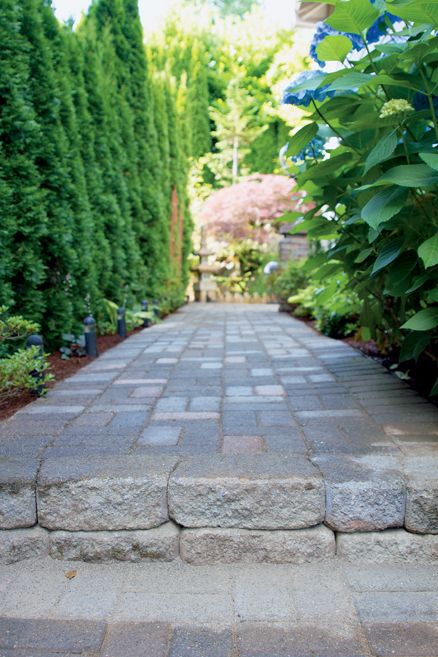
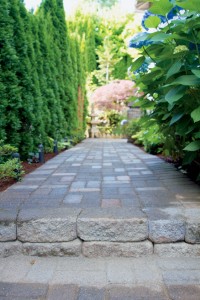 Our porches, patios and lawns are natural extensions of our home. And just as homes have areas that are public and private, so too do our yards. Sometimes, you welcome the friendly dog walker passing by to join you for a visit on the porch. Other times, it feels awkward to host supper club outside on the veranda while the neighborhood teens zoom by on their skateboards. And it’s probably fair to say that you never want to see the utility company’s access box that’s installed in plain view from your deck.
Our porches, patios and lawns are natural extensions of our home. And just as homes have areas that are public and private, so too do our yards. Sometimes, you welcome the friendly dog walker passing by to join you for a visit on the porch. Other times, it feels awkward to host supper club outside on the veranda while the neighborhood teens zoom by on their skateboards. And it’s probably fair to say that you never want to see the utility company’s access box that’s installed in plain view from your deck.
One attractive solution is to grow your own privacy screen. Privacy screens can help delineate special hideaways in your yard, hide an unsightly view, provide shelter from wind or strong summer sun—and even control unwanted traffic through your garden.
Our particular climate here (Zone 7, according to USDA’s Plant Hardiness Zone Map, a tool that helps gardeners determine what plants will thrive in particular climates) is optimum for home gardeners who wish to grow their own privacy screens. Many will take less than one growing season to implement with a little planning and forethought.
Set Your Goals, Get Up and Growing
Whether you are trying to camouflage the air conditioning units or create a private “outdoor room” in your yard, stand in the space and give some thought to how you’ll be using the screen and if you’ll be using it for three seasons (outdoor entertaining) or four (hiding something from view). Some of your choices are evergreen and bushy, perfect for hiding that electric meter all year long, while others make a versatile backdrop that changes with the seasons before dropping leaves and going dormant for winter. Knowing these answers will dictate the amount of space you have to work with and guide your plant choices.
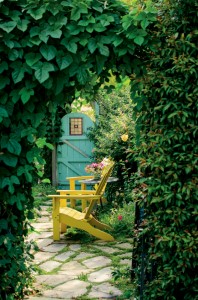 Next, imagine how you want your natural privacy screen to look once it is fully established. Measure the height, width, and depth/density you will want it to be at maturity. According to Barbara Leach, Horticulture Technician with the Virginia Cooperative Extension, “Most people think they need something much larger than they actually do, or they don’t pay attention to the plant’s ultimate height.” For most backyards, she recommends a screen height of 15 to 18 feet at maturity in order to avoid creating that claustrophobic “bottom of a well” effect, where you feel surrounded on all sides and your lawn is starved for sunlight.
Next, imagine how you want your natural privacy screen to look once it is fully established. Measure the height, width, and depth/density you will want it to be at maturity. According to Barbara Leach, Horticulture Technician with the Virginia Cooperative Extension, “Most people think they need something much larger than they actually do, or they don’t pay attention to the plant’s ultimate height.” For most backyards, she recommends a screen height of 15 to 18 feet at maturity in order to avoid creating that claustrophobic “bottom of a well” effect, where you feel surrounded on all sides and your lawn is starved for sunlight.
Is the environment where your screen will be dry or boggy? Shady or full sun? Is the site vulnerable to strong winds or is it sheltered? Leach advises, “It is infinitely easier to choose a plant that is suited to your site, than it is to permanently modify your site to suit the plant.”
Use an outdoor privacy screen in your yard in the same ways you would use a decorative room divider screen inside. They are perfect for defining spaces, hiding clutter and just adding an interesting decorative touch. An outdoor privacy screen offers your yard more than just a natural barricade. A row of decorative grasses that grows taller than your deck will sway in the breeze and soften any hard lines that exist between the deck and your landscaping. A hedge of hollies planted along the fence draws your eye to that attractive corner of your lawn with their glossy green leaves and bright red berries.
Know What You’re Getting Yourself Into
Single-species plantings like a hedge of boxwood or holly require frequent pruning, so you’ll have to make a plan for that if you’re not handy with hedge clippers.
Likewise, it is good to consider plant toxicity if small children or animals will be playing nearby. In varying degrees, many common Virginia garden plants like azalea, daphne, foxglove, hydrangea, oleander, rhododendron, wisteria and yew are known to be toxic. But Leach says, “They really are only potentially harmful if they are ingested, so this may not be a problem for you.”
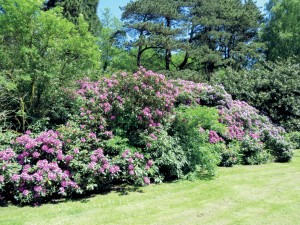 Know that some plants like bamboo, Japanese honeysuckle and morning glories are self-sowers and very invasive. If you’re not diligent with their upkeep, they can take over the yard (and possibly your neighbor’s as well).
Know that some plants like bamboo, Japanese honeysuckle and morning glories are self-sowers and very invasive. If you’re not diligent with their upkeep, they can take over the yard (and possibly your neighbor’s as well).
Vines will also need to be pruned often throughout the growing season—at least monthly. Leach says, “The golden rule for vines is never let your vine grow taller than your ladder.” Though charming on an arbor or trellis, vining plants like clematis, Dutchman’s pipe, English ivy, jasmine, Carolina jessamine, trumpet vines wisteria can be especially challenging. “Don’t make the mistake of thinking you can restrain a thirty-foot vine and keep it on a six-foot-long fence. When nobody’s looking, it will eat the car,” Leach warns. Know what kind of gardener you are and eliminate choices that just don’t match your lifestyle.
Can’t decide between stolid boxwood or cascades of ivy? Good news! You can have them both. Unless you are going for a very formal look, the best practice is to mix different specimens. A screen can be made of a single type of plant or a group of different plants, depending on your requirements and the look you’re hoping to achieve. Often, mixed hedges look more natural, attract a larger variety of beneficial wildlife such as bees, butterflies and birds—and provide more “interest” through the seasons. Don’t be afraid to mix heights and textures. This softens the edges of your screen and allows the plants to grow naturally, with minimal pruning and upkeep.
Spring and summer are times we enjoy our outside spaces most. With careful planning and implementation, a beautiful, natural privacy screen will enhance the landscape and help you create your own little getaway—right in your own backyard.
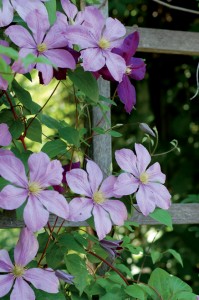 Zone 7 Screen Stars
Zone 7 Screen Stars
Vines – Hardy jasmine, Carolina Jessamine, Clematis, Native honeysuckle
Small-To-Medium Plants That Can Grow Up To 15 Feet Tall – Abelia, Boxwood, Camellia, Colonnade or “Spire” apple, Crabapple, Evergreen viburnum, Holly, Lilac
Large Plants That Can Grow From 15-30 Feet Tall – “Red” series of hollies (“Robin” or “Nellie Stevens”, Cryptoia, False cypress
Boxwood, Clematis, Hedges, Lilac, Outdoor Gardens, Privacy patio






